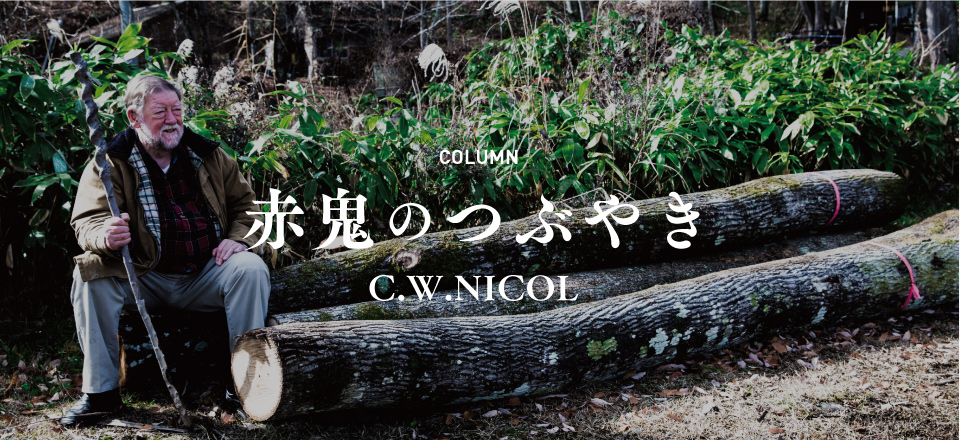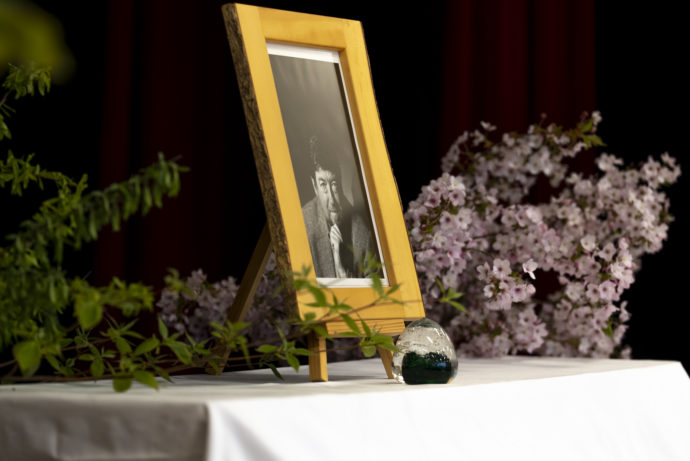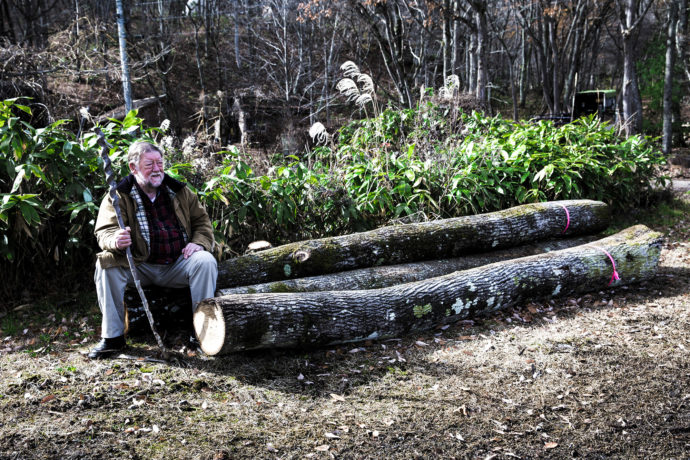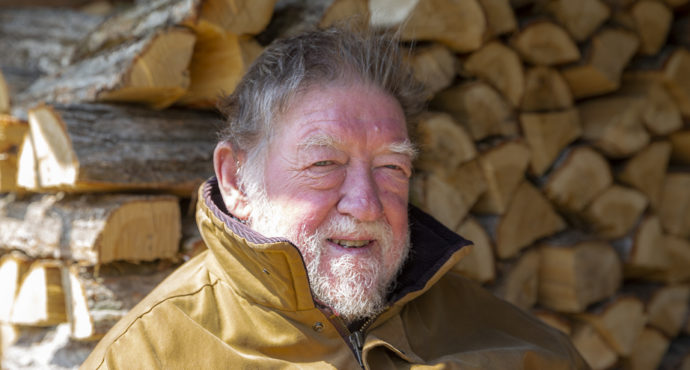Column
【赤鬼のつぶやき C.W.ニコル】ブナ(Beech)
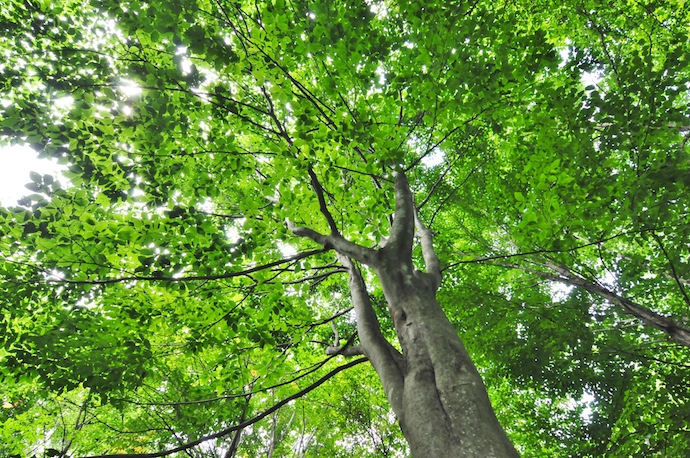
わたしが日本に初めてやって来たのは、1962年10月のことでした。ところが翌年7月になると暑くてじめじめしたこの国の夏にすっかりやられてしまい、東京の四谷にある日本空手協会の道場でのトレーニングではとても苦しい思いをしました。イギリス、そしてカナダの北極圏で4回も夏を過ごしていたわたしにとって、日本の夏がどれほどつらかったか、おわかりいただけるでしょうか。
その様子をみかねた空手道場の先輩が「どこか涼しいところ」へ避暑に行こうとわたしを山へ連れて行ってくれました。金曜日の夜に上野駅で集合して電車を乗り継ぎ、到着するころにはすでに夜が明けていました。記憶が定かではありませんが、行き先は長野の飯山だったと思います。
炎天下の中、駅からかなりの距離を歩きました。日本の太陽はイギリスや北極圏に比べると高く昇るので、溶けそうな暑さに汗だくになったのを覚えています。そして標高1000メートルほどのあたりまで登ったとき、あたりはまるで魔法のように神秘的な世界に変わりました。つめたくておいしい空気。心地よく吹く風。若葉を透かして差し込む太陽の光は、大聖堂を飾るステンドグラスよりもずっとあざやかな美しさで輝いていました。樹々はその高さも幹の太さも申し分がなく、優しいグレーの樹皮を緑や黄色といったパステルカラーの苔が彩る様子は、ヨーロッパの教会にそびえる荘厳な石柱を思わせます。
これこそ、太古から変わらないブナ林の風景です。
もちろん、子どものころ過ごしたイギリスでもブナを見たことはありました。でもわたしが遊びまわっていたところのブナは、どれも人の手で植えられたものばかりだったのです。山々に抱かれ、小川が流れている日本の森へ生まれて初めて足を踏み入れたその日、わたしはこの国の自然を愛おしく思い、その魅力に心を奪われたのです。
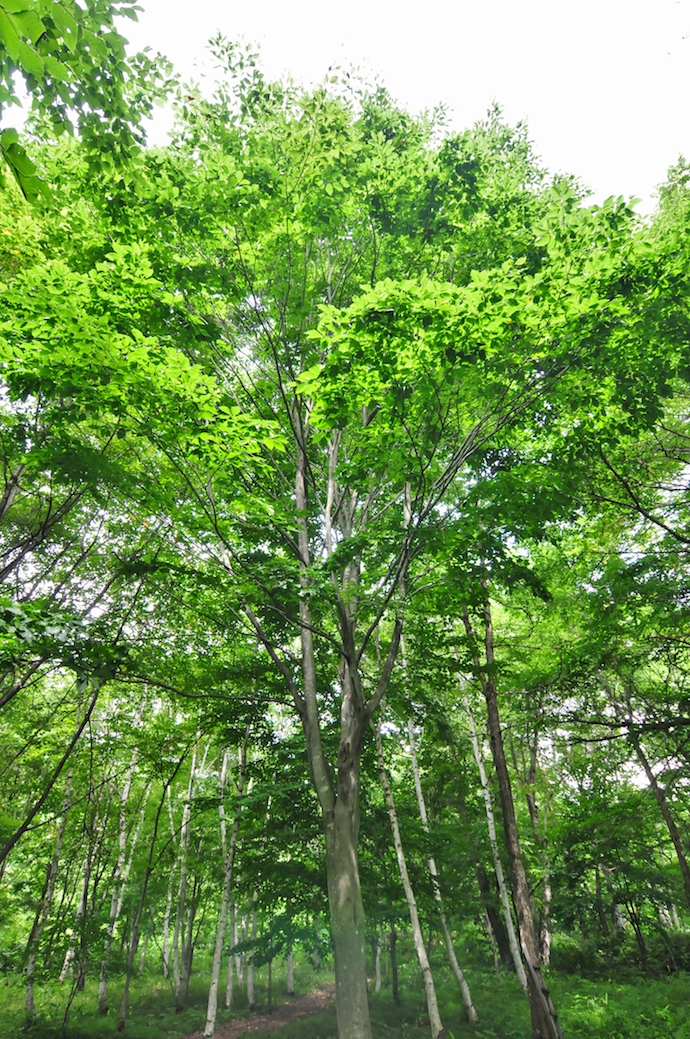
日本には二種類のブナが生育しています。「ブナ(学名:Fagus crenata)」と「イヌブナ(学名:Fagus Japonica)」です。水はけの良い柔らかい土を好み、大きくなると35メートルほどの高さまで育つこともあります。チクチクした殻のなかにある角ばった実を食べるのは、人間だけではありません。リスや熊など野生動物にとってもごちそうになります。発芽したばかりの芽やみずみずしい若葉なら、おすすめの食べ方はサラダです。
また、日本ではブナの名前の語源は「使いみちのない木」だといわれていますが、ヨーロッパや北米では、ブナ材が家具や床に重宝されていて大人気です。日本ではブナでお椀などの食器を作ります。臭いにクセがないものの、とても湿気を吸いやすいので、屋外やキッチン、バスルームといった場所で使う材にはあまり向いていないのです。
ブナは生態系において大切な役割を果たしています。生きものからみれば、ブナは食べものであり、身を守る棲みかにもなります。森の表土を保護して、地下水を保つ働きもあります。にもかかわらず、日本ではかつて政策として「使いみちのない」ブナを伐採していたのです。でも、これが自然を保護する長期的な視野に欠けた計画だったとわかっているいま、ブナを漢字で「木」偏に「無」と書いて「橅」とするのはもうやめても良いかもしれませんね。
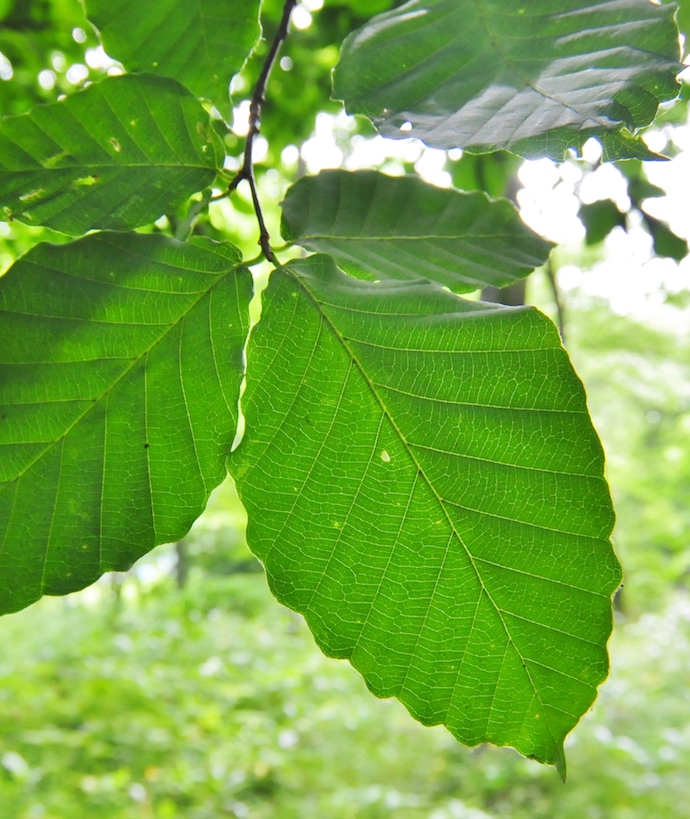
この30年の間、アファンの森にブナをよみがえらせる試みを続けてきましたが、この木を森になるまで育ててゆくのにはじつに長い時間がかかります。ブナの木は、もはや自然の一部であるだけでなく、自然を支えているかけがえのない生命です。300年もの時を生きた天然のブナを、チェーンソーがあればほんの5分であっけなく伐り倒してしまうことができます。でも、それはあまりにも愚かな行為だと思いませんか。
C.W.ニコル
2016年7月21日
写真提供:C.W.ニコル・アファンの森財団
BEECH
I came to Japan for the first time in October of 1962. In June of 1963, I was really suffering from the heat and humidity of Tokyo, especially at my training sessions at the JKA (Nippon Karate Kyokai) main dojo in Yotsuya, Tokyo. That is no small wonder, having been raised in Britain and having previously spent four summers in the Canadian arctic.
Some of my Karate sempai, who had been taking me into the mountains since the previous winter, promised to take me to a ‘cool place.’ We met at Ueno station late on a Friday evening. We went by train, changing trains, and in the early morning we disembarked. Wracking my brains over the years, I think that our destination must have been Iiyama, Nagano.
We walked for a long, long time, under burning sun (the summer sun in Japan is much higher in the sky than it is in Britain or the arctic) and, to me anyway, sweltering heat. Finally at an elevation above sea level of about 1000 metres, we entered a magical, mystical world. The air was cool and delicious, with a gentle breeze. Sunlight filtering through young leaves was far more vivid and beautiful than the stained glass of any grand cathedral. The tall, broad, fluted trunks of trees, gentle grey in colour and patterned with pastel shades of green and yellow lichens reminded me, but surpassed in grace and beauty, the great stone pillars of western churches. From every direction came the sound of sweet, cold, crystal-clear running water.
This was an ancient beech forest.
I had known beech trees in Britain since I was a child. However, the beech trees and groves I had played in were all planted by humans. This was an ancient, natural beech forest, and the first in my experience. From that day on my life has been filled with a love and wonder of Japan’s forests, mountains and natural streams.
There are two species of Japanese beech; ‘Buna’ or ‘Siebold’s beech – Fagus crenata, and ‘Japanese blue beech, ‘Inubuna- – Fagus Japonica. They prefer well-drained, loamy soils. They grow to a height of 35 metres. The seeds, or ‘mast’ are angular brown nuts, encased in a prickly case. They are highly edible for humans, bears, squirrels and other wildlife. Beech shoots and very young leaves are also edible and excellent in salads. Contrary to a widespread belief in Japan, the beech is not a ‘useless tree.’ In Europe and North America the timber is highly prized for indoor furniture and flooring, and is also widely used in Japan for bowls and so forth.
Odorless beech wood is very absorbent, which is why it is not good for outdoors, kitchens or bathrooms. However, it is excellent for living rooms, studies, bedroom, dressers and so forth.
Beech trees are tremendously important for wildlife, giving both food and shelter, also for soil and water conservation. The former Japanese Forestry Agency’s policy of getting rid of beech trees has proven to been idiotic, shortsighted and irresponsible. Moreover, somebody should change the damn Chinese ‘kanji’
We have been bringing back beech trees to our Afan woods for the last thirty years and they take a long time to grow. Five minutes with a chainsaw can destroy 300 years of invaluable life and service to nature.
C.W.Nicol
July 21.2016.
C.W.ニコル
作家・1940年イギリス南ウェールズ生まれ。1995年日本国籍取得。カナダ水産調査局北極生物研究所の技官・環境局の環境問題緊急対策官やエチオピアのシミエン山岳国立公園の公園長など世界各地で環境保護活動を行い、1980年から長野県在住。1984年から荒れ果てた里山を購入し「アファンの森」と名づけ、森の再生活動を始める。2005年、その活動が認められエリザベス女王から名誉大英勲章を賜る。2011年、2016年に天皇、皇后両陛下がアファンの森をご視察された。


